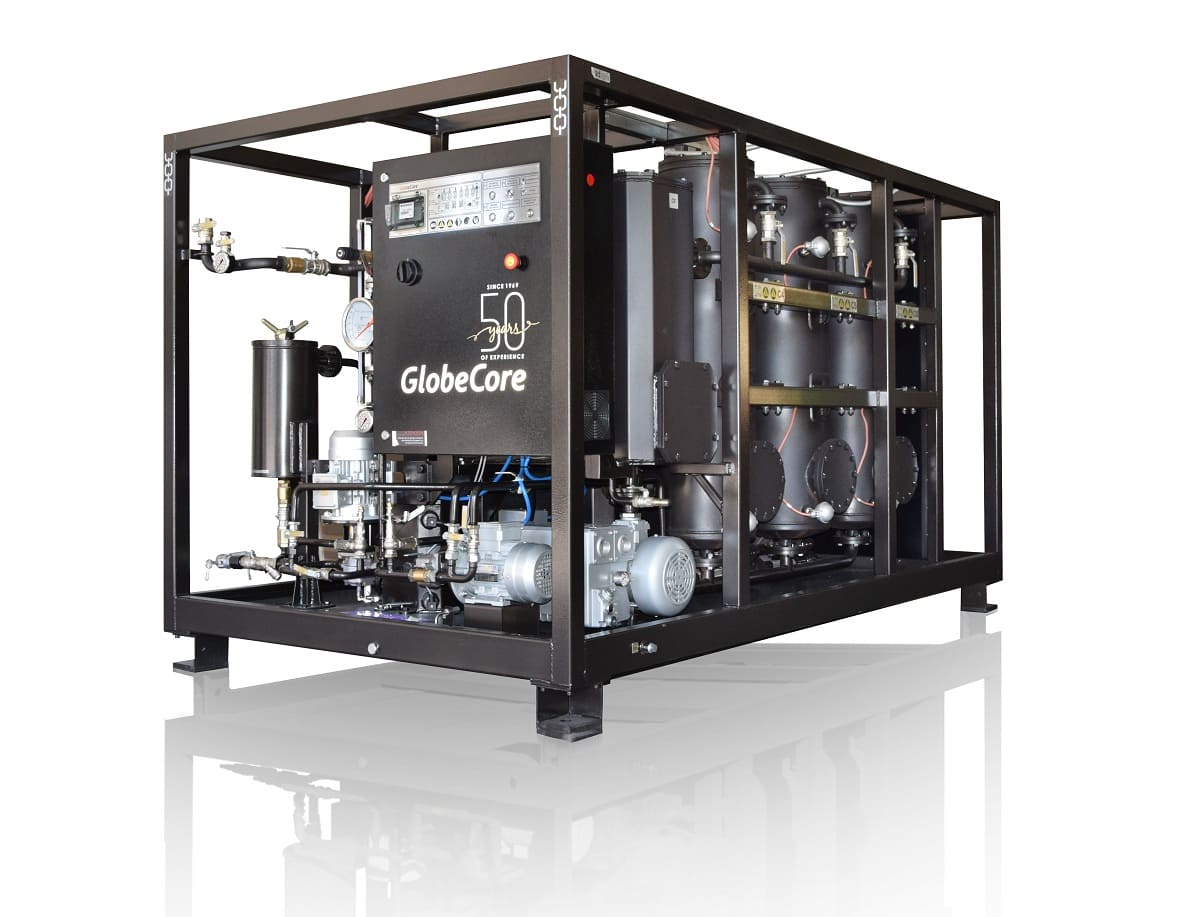Secret Steps in the Regenerated Transformer Oil Treatment Process
Secret Steps in the Regenerated Transformer Oil Treatment Process
Blog Article
Exactly How Regenerated Transformer Oil Extends Transformer Life Expectancy
The function of transformer oil is important in making certain the reliability and durability of transformers, serving as both an insulator and coolant. Restored transformer oil provides an engaging remedy to improve these functions by successfully removing harmful contaminations that compromise efficiency.
Relevance of Transformer Oil
Transformer oil plays an essential duty in the efficient procedure of electric transformers. It mostly acts as a protecting medium, ensuring and stopping electric discharges that parts run safely under high voltage conditions. The oil's dielectric buildings are basic to preserving the integrity of the transformer, as they minimize the risk of failings that could result in devastating occurrences or pricey downtimes.
Along with its protecting abilities, transformer oil additionally operates as a coolant. As transformers run, they create heat that should be dissipated to avoid overheating and subsequent damages. The oil circulates within the transformer, taking in and transferring warmth away from crucial elements, therefore maintaining ideal operating temperatures.
In addition, transformer oil serves as a barrier against moisture and contaminants, which can jeopardize the efficiency and long life of the transformer. Its chemical buildings assist in counteracting acids and other results that might create gradually, contributing to the overall health and wellness of the electrical system.
Advantages of Regenerated Oil

In addition, regenerated transformer oil has a reduced degree of contaminations, including bits and contaminants that can break down performance. This pureness not only boosts the oil's thermal conductivity but additionally extends the functional life expectancy of transformers by decreasing overheating dangers. The enhanced thermal stability of restored oil guarantees regular performance also under high operating temperature levels, which is essential for maintaining transformer effectiveness.
An additional benefit is its ecological influence. Restored oil promotes sustainability by lowering waste and the need for new oil production, thus reducing the carbon footprint connected with transformer maintenance. Regenerated Transformer Oil. Furthermore, the durability of regenerated oil translates to lower upkeep prices in time, as fewer oil changes and less constant devices downtime are needed.
Refine of Oil Regrowth
The regrowth of transformer oil includes a methodical procedure created to restore the oil's original properties and boost its efficiency. This process commonly begins with the elimination of the made use of oil from the transformer, which is after that based on different filtration methods.
The very first step in the regeneration process is the filtering, where solid impurities such as sludge, dust, and steel particles are gotten rid of. This is frequently followed by vacuum cleaner distillation, which aids to remove wetness and unstable compounds, consequently enhancing the oil's dielectric strength.

Effect On Transformer Performance
Recovering the buildings of regenerated transformer oil significantly affects the total efficiency of transformers. Improved dielectric toughness is one of the most vital advantages, as it enables far better insulation and minimizes the probability of electric breakdown. This enhancement results in a more stable operation under high voltage conditions, eventually causing increased effectiveness.
Furthermore, the removal of impurities and degradation items during the regeneration procedure lessens the danger of overheating. Cleaner oil promotes much better warmth dissipation, which is necessary for maintaining optimal operating temperatures. Consequently, the thermal efficiency of the transformer is improved, permitting greater tons without compromising dependability.
Additionally, the chemical security of restored oil makes sure extended operational life. It withstands oxidation and deterioration, decreasing the frequency of maintenance treatments and oil substitute. This security not just adds to boosted performance yet likewise straightens with sustainability goals by reducing waste.
Future of Transformer Maintenance
As developments in modern technology continue to reshape the landscape of electric design, the future of transformer upkeep is positioned for substantial change. The integration of smart innovations, such as IoT sensing units and anticipating analytics, makes it possible for real-time surveillance of transformer health and wellness, boosting the ability to preemptively attend to problems prior to they rise into major failings. This aggressive method not only optimizes operational effectiveness yet also extends the life expectancy of transformers.
Moreover, the application of synthetic intelligence (AI) in data analysis enables more accurate mistake discovery and diagnosis. By leveraging artificial intelligence formulas, maintenance teams can recognize patterns in operational information that human analysts may forget, leading to more educated decision-making.
In addition, the fostering of environmentally friendly techniques, including making use of regenerated transformer oil, is readied to redefine maintenance protocols. This sustainable approach not just lessens ecological impact but also improves the total health and wellness of the transformer.
Finally, the change towards automation in upkeep processes is anticipated to simplify procedures, reduce downtime, and lower expenses. As these technologies remain to progress, the future of transformer maintenance will undoubtedly become extra reliable, trusted, and sustainable, guaranteeing the integrity of crucial electrical facilities.
Final Thought
The use of regenerated transformer oil considerably enhances Visit This Link the functional longevity of transformers. By effectively bring back dielectric stamina and thermal security, this oil plays an essential duty in mitigating risks connected with overheating and oxidation. The regrowth process not only removes dangerous impurities yet also minimizes maintenance regularity and oil substitute prices. Inevitably, the adoption of regenerated oil represents a critical improvement in transformer upkeep, ensuring optimal efficiency and sustainability in the administration of electric facilities.
The role of transformer oil is crucial in ensuring the dependability and longevity of transformers, serving as both an insulator and coolant.Transformer oil plays an essential function in the reliable operation of electric transformers. Restored oil promotes sustainability by minimizing waste and the need for new oil manufacturing, consequently decreasing the carbon footprint associated with transformer upkeep.Restoring Recommended Site the properties of regenerated transformer oil considerably affects the overall performance of transformers.The utilization of regenerated transformer oil dramatically boosts the functional longevity of transformers.
Report this page